
Keep the Good Times Rolling - Direct-Fit Catch Can R&D, Part 1 - Concept and Prototype
Hyundai may have never been a brand synonymous with producing the driver's car. Their models are often used as some sort of punchline to illustrate what we gearheads don't want in our cars. There have been some contenders throughout the years to ward off the bad jokes, but the quirky, asymmetrical Veloster that followed the Genesis earns the most credit for injecting new energy into Hyundai's image. Its release had us all thinking that the real spirited driving experience finally made its way to the well-known manufacturer.

While the Genesis Coupe might be a piece of Hyundai History now, the Veloster still delivers the sporty flair to the car maker's lineup.
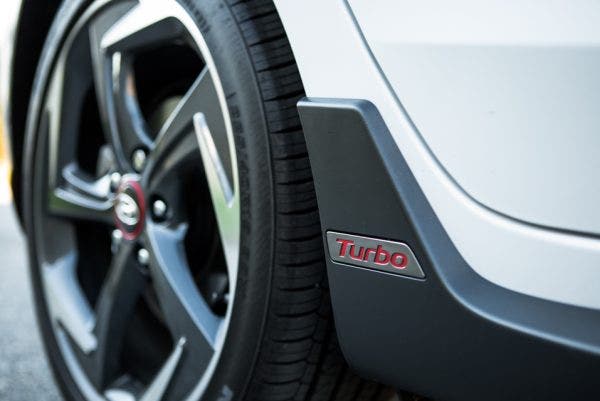
The twin-scroll turbo and edgy styling put this strange hatchback in a category of its own.
Hyundai upped the game with their unique take on the hatchback by making a hot, twin-scroll turbocharged version that could compete with the likes of the hot-hatch godfather, the GTI, or Honda's souped-up Civic. And now, as 2019 rapidly approaches, the Veloster Turbo has received a fresh face, further cementing itself as the one model in the hot-hatch genre that's simply one-of-a-kind. The free-spirited coupe kept its offset 3-door design, with styling cues inside the cabin that further accentuate the asymmetrical features. Coupled with the new looks, Hyundai fitted tons of new technology into this Veloster generation, paving the way for the scalding hot N version coming soon.

Even the inside of the Veloster has a lively character. It's unlike so many of its contemporaries, especially with the two-toned interior.

The Gamma 1.6T is still the same engine featured in the previous generation, but we're ok with this. The boisterous 4-cylinder packs the punch needed to get your adrenaline pumping. Combined with the fresh face, and updated suspension, the Veloster Turbo makes for a true contender across the hot-hatch and sports coupe markets.
Not everything received an update this time around for the Veloster Turbo. While there might be a new dual-clutch transmission offered, the bell housing is still mated with the same Gamma G4FJ 1.6T found in the first generation. The old "if it ain't broke" saying comes to mind here, and for the most part I would agree. The punchy little engine certainly heightens the Veloster's smile-per-mile rating. The speedy bursts are what makes this model in part so much fun to switch through the gears and whip through turns. However, some of the same issues were carried over from previous generations of the Veloster, the most notable being blow-by.
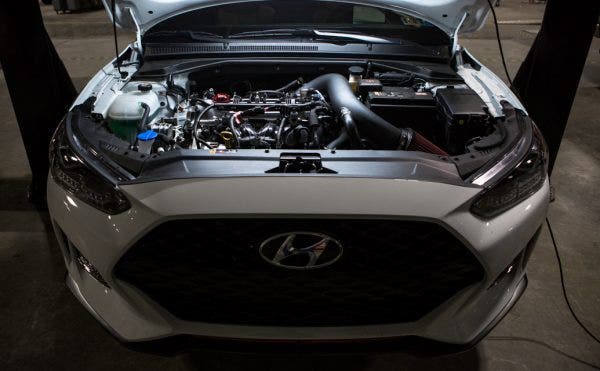
The Veloster is not a large car by any means. Still, with the engine cover installed and aftermarket intake kit, there was plenty of room for our engineer to work with.
Historically, we saw blow-by with every manufacturer that began to equip their vehicles with a direct injection fuel delivery system. Without that detergent-rich fuel washing over the valves, carbon stakes its claim on what should otherwise be clean metal. Sticky, dirty valves can easily turn this revitalized hot-hatch back into the punchline that plagued the manufacturer in the past.
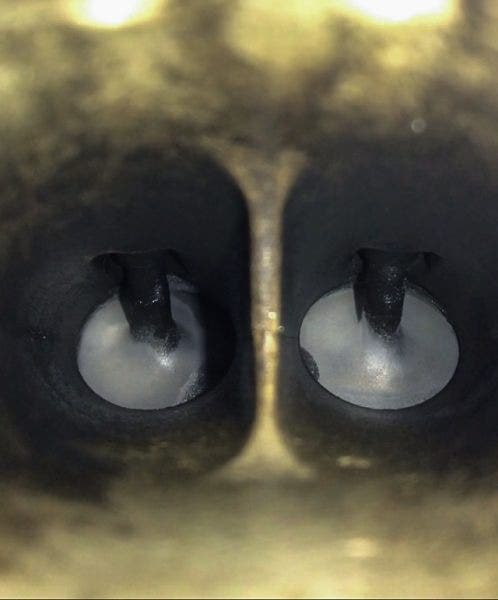
This is a view of the intake valves on our basically brand-new 2019 Veloster Turbo. In less than 5000 miles, there is already a significant buildup of carbon, which will affect the performance and efficiency of the G4FJ.
There is a way to make sure the Veloster Turbo keeps its youthful energy, which is by capturing those oil and fuel vapors before they make their way into the intake tract. With our 2019 R-Spec Veloster Turbo donor vehicle here in the Mishimoto R&D facility, our engineer eagerly started designs for protecting those intake valves.
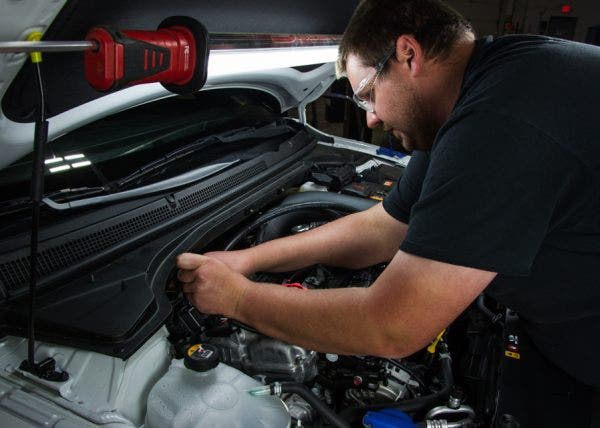
Dan was ready to jump right in and get started on installing the prototype kit.
Typically, when it comes to catch cans, the first hurdle is locating an optimal mounting location. Luckily for us, our engineer was able to easily nestle one of our compact catch cans behind the engine bay with a sturdy Veloster-specific bracket. Routing new lines for our prototype kit became the obstacle in this project. Generally speaking, the PCV line is easy enough to access. In the case of the G4FJ, we had flashbacks of the installation for our Focus ST and RS catch can, which involves removing the intake manifold. Installing the prototype kit on the Gamma 1.6T does require the same treatment to access the PCV ports, but in the end, the results will justify the labor.
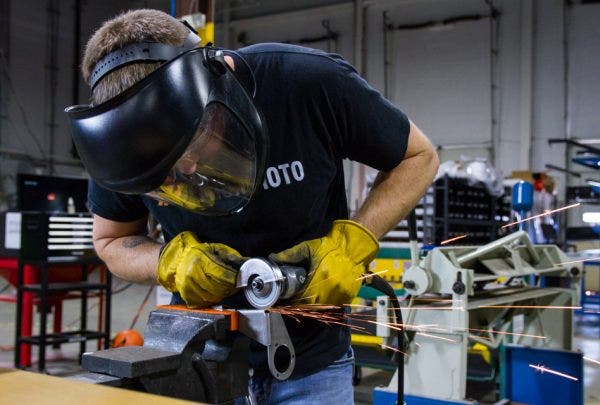
Mike, our master fabricator, makes some adjustments to the prototype bracket to ensure a perfect fit.
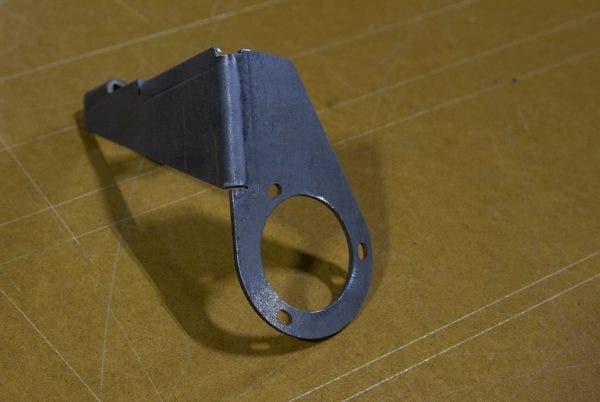
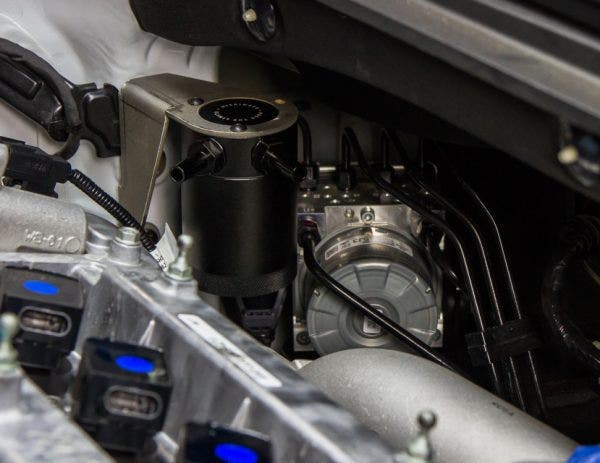
The second generation of the Veloster Turbo is working hard to claim the title of most fun and unique model in its class. However, leaving the intake valves unprotected against that recirculated fuel and oil vapor is one way to turn this edgy take on the hatchback segment into the same car stigma that's clouded its predecessors. With the prototype catch can kit installed, we sent our loaner vehicle out for our standard 1000-mile road test. Stay tuned to see just how much we were able to collect.
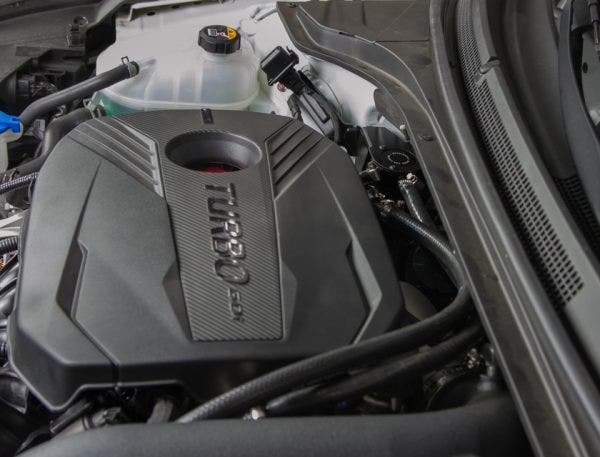
Thanks for Reading!
-Nick




